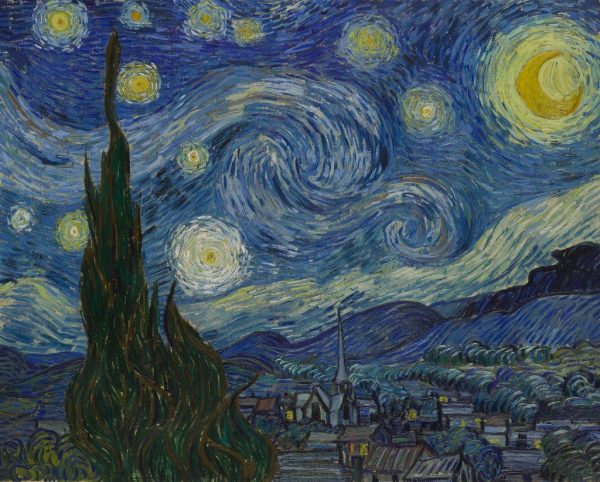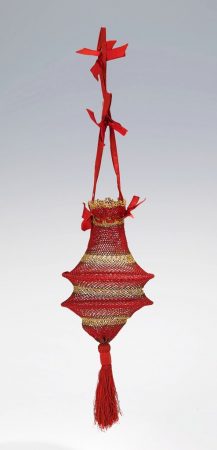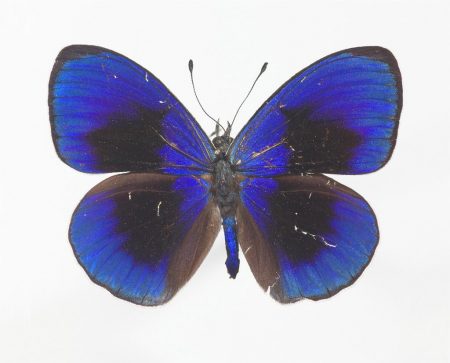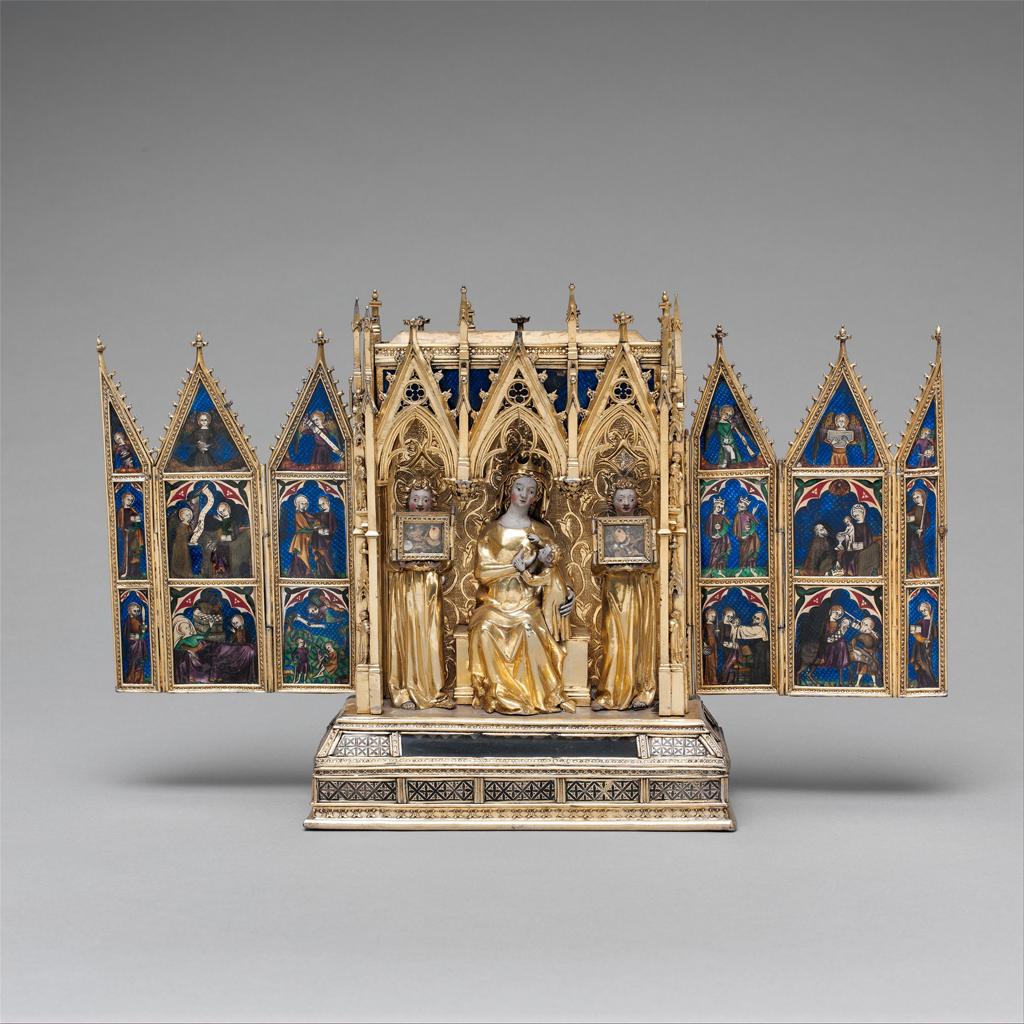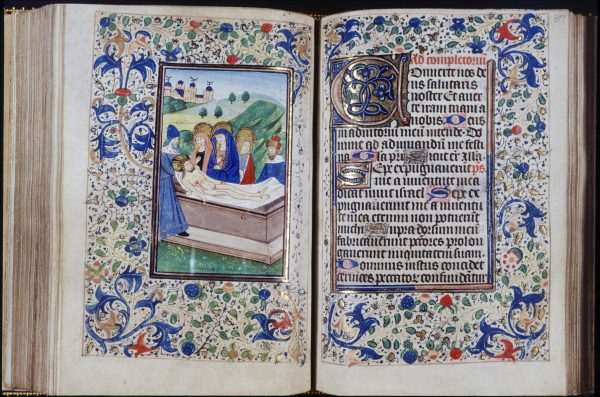
Attributed to Studio of unknown French (illuminator), Possibly Style of unknown Flemish (illuminator). c.1470 (creation date). Book of Hours (Horae Beatae Mariae Virginis in Usum Ecclesiae Romanae cum Calendario), Folio 86v: Hours of the Virgin: Compline: Entombment, overall, left, with Folio 87r at right. Illumination, Leaf (component), Manuscript. Place: Trinity College, Watkinson Library (Hartford, Connecticut, USA).
Books of hours are devotional texts that contain a personalized selection of prayers, hymns, psalms, and New Testament excerpts chosen specifically for their owner. Popular in the Middle Ages, the most expensive of these books could be highly decorated, but the more affordable versions usually only showed minimal decoration, usually of the first letter of a page. They had, in fact, become so popular by the 16th century that they were often owned by people from all walks of society; servants even had their own copies—there is a court case from 1500 where a pauper woman was accused of stealing a servant’s book of hours.
